Key Takeaways
- Master Attribution Models: Unravel the intricacies of first-touch, last-touch, and multi-touch attribution models, gaining a nuanced understanding of user interactions in the digital landscape.
- Empower Decision-Making: Choose the right Marketing Attribution Software tailored to your business needs, enabling data-driven decision-making for optimal budget allocation and strategic marketing campaigns.
- Explore Top Solutions: Navigate the market with confidence by exploring leading options like Google Analytics 360, Adobe Marketo Measure, HubSpot Marketing Hub, and others. Uncover the strengths of each to enhance your marketing strategy.
Embarking on the digital marketing journey involves navigating through a vast sea of data, and deciphering the impact of each touchpoint on your customer’s journey can be an intricate puzzle.
This is where Marketing Attribution Software emerges as a beacon, shedding light on the effectiveness of your marketing efforts and enabling data-driven decision-making.
In this comprehensive guide, we delve deep into the realms of Marketing Attribution Software, unraveling its significance in the dynamic landscape of digital marketing.
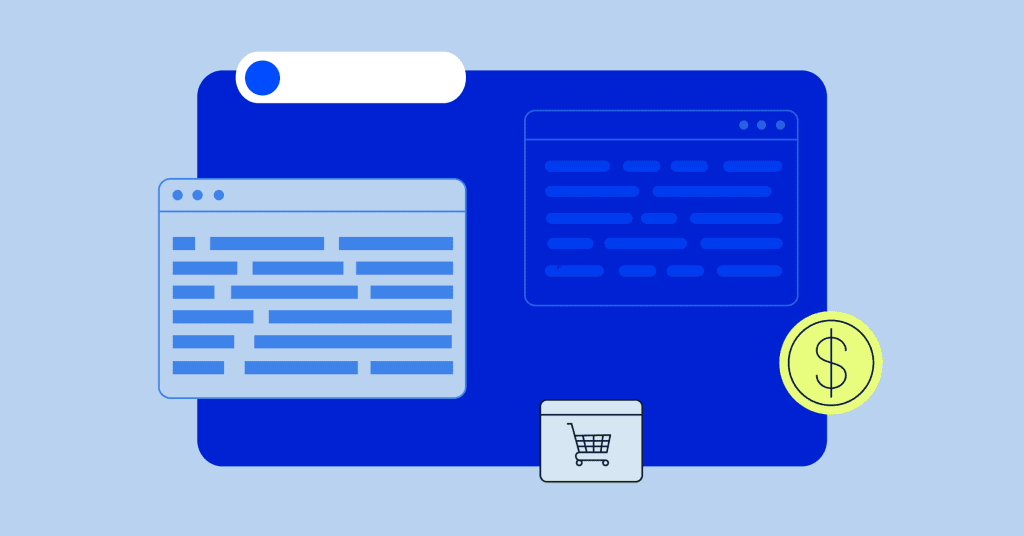
Defining Marketing Attribution Software: A Beacon in the Digital Maze
At its core, Marketing Attribution Software is the compass that helps marketers navigate the intricate web of customer interactions.
It goes beyond the traditional last-click attribution model, offering a nuanced understanding of the entire customer journey.
Whether it’s the first exposure, the middle-of-the-funnel engagements, or the final conversion, Marketing Attribution Software plays a pivotal role in assigning credit where it’s due.
In this section, we demystify the fundamental aspects of Marketing Attribution Software and its role in shaping marketing strategies.
Navigating Attribution Models: First, Last, and Everywhere In Between
Understanding the essence of Marketing Attribution Software involves grasping the diverse attribution models it employs.
From the initial touchpoint to the final conversion, attribution models like first-touch, last-touch, and multi-touch paint a vivid picture of user interactions.
We dissect each model, elucidating its strengths and limitations, providing you with the knowledge to choose the model that aligns seamlessly with your marketing objectives.
Unveiling the Arsenal: Key Features of Marketing Attribution Software
The efficacy of Marketing Attribution Software lies in its features. From meticulous data tracking to seamless integration with various marketing channels, the capabilities of these tools are extensive.
This section delves into the arsenal of features that define a robust Marketing Attribution Software, exploring its ability to adapt, integrate, and deliver actionable insights.
Unlocking the Potential: Benefits of Harnessing Marketing Attribution Software
Why invest in Marketing Attribution Software? The answer lies in the array of benefits it brings to the table.
Improved ROI measurement, enhanced decision-making, optimized budget allocation, and a profound understanding of the customer journey are among the transformative advantages.
In this segment, we explore how leveraging Marketing Attribution Software can elevate your marketing endeavours to new heights.
Decoding the Selection Process: How to Choose the Right Marketing Attribution Software
Selecting the perfect Marketing Attribution Software for your business demands a strategic approach.
Assessing your business needs, ensuring compatibility and integration, and evaluating ease of use, customization options, and pricing models are key factors in the decision-making process.
This section serves as your guide, offering insights into the critical considerations that will empower you to make an informed choice.
Stay tuned as we embark on a journey through the intricate landscape of Marketing Attribution Software, unravelling its complexities and providing you with the knowledge to make decisions that will shape the trajectory of your digital marketing efforts.
But, before we venture further, we like to share who we are and what we do.
About AppLabx
From developing a solid marketing plan to creating compelling content, optimizing for search engines, leveraging social media, and utilizing paid advertising, AppLabx offers a comprehensive suite of digital marketing services designed to drive growth and profitability for your business.
AppLabx is well known for helping companies and startups use digital marketing to drive web traffic to their websites and web apps.
At AppLabx, we understand that no two businesses are alike. That’s why we take a personalized approach to every project, working closely with our clients to understand their unique needs and goals, and developing customized strategies to help them achieve success.
If you need a digital consultation, then send in an inquiry here.
What is Marketing Attribution Software & How to Choose One?
- Understanding Marketing Attribution Software
- Benefits of Using Marketing Attribution Software
- How to Choose the Right Marketing Attribution Software
- Top Marketing Attribution Software Options
1. Understanding Marketing Attribution Software
In the ever-evolving landscape of digital marketing, understanding the intricacies of Marketing Attribution Software is paramount.
This section breaks down the essentials, from the fundamental principles to the various attribution models that shape its effectiveness.

Basics of Attribution Models
First-Touch Attribution: The Ignition Point
First-touch attribution gives credit to the initial interaction that introduces a user to a product or service.
It’s akin to the first spark that ignites the customer journey.
For instance, if a user discovers a brand through a social media ad, the first-touch model attributes the entire conversion value to that specific touchpoint.
While this model provides clarity on the entry point, it might overlook the subsequent interactions that contribute to the conversion.
Last-Touch Attribution: Closing the Loop
Conversely, last-touch attribution credits the final touchpoint before conversion.
Imagine a customer journey where a user clicks on a Google Ad, explores your website, but converts after clicking on a retargeting ad.
Last-touch attribution allocates the entire conversion value to the last touchpoint, providing a straightforward view of what led to the final action.
However, it tends to overlook the earlier stages of the customer journey.
Multi-Touch Attribution: Comprehensive Insights
Recognizing the limitations of single-touch models, multi-touch attribution embraces complexity.
This model distributes credit across multiple touchpoints throughout the customer journey, acknowledging the nuanced interactions.
Examples include linear attribution, which assigns equal credit to each touchpoint, and time decay attribution, which gives more credit to touchpoints closer to conversion.
Multi-touch attribution paints a holistic picture, but the challenge lies in determining the weightage assigned to each interaction.
Key Features of Marketing Attribution Software
Data Tracking and Collection: Precision in Action
Marketing Attribution Software relies on meticulous data tracking and collection. It captures user interactions across various touchpoints, providing a comprehensive dataset for analysis.
Google Analytics, for instance, tracks user behaviour, traffic sources, and conversion paths, offering marketers insights into the effectiveness of their campaigns.
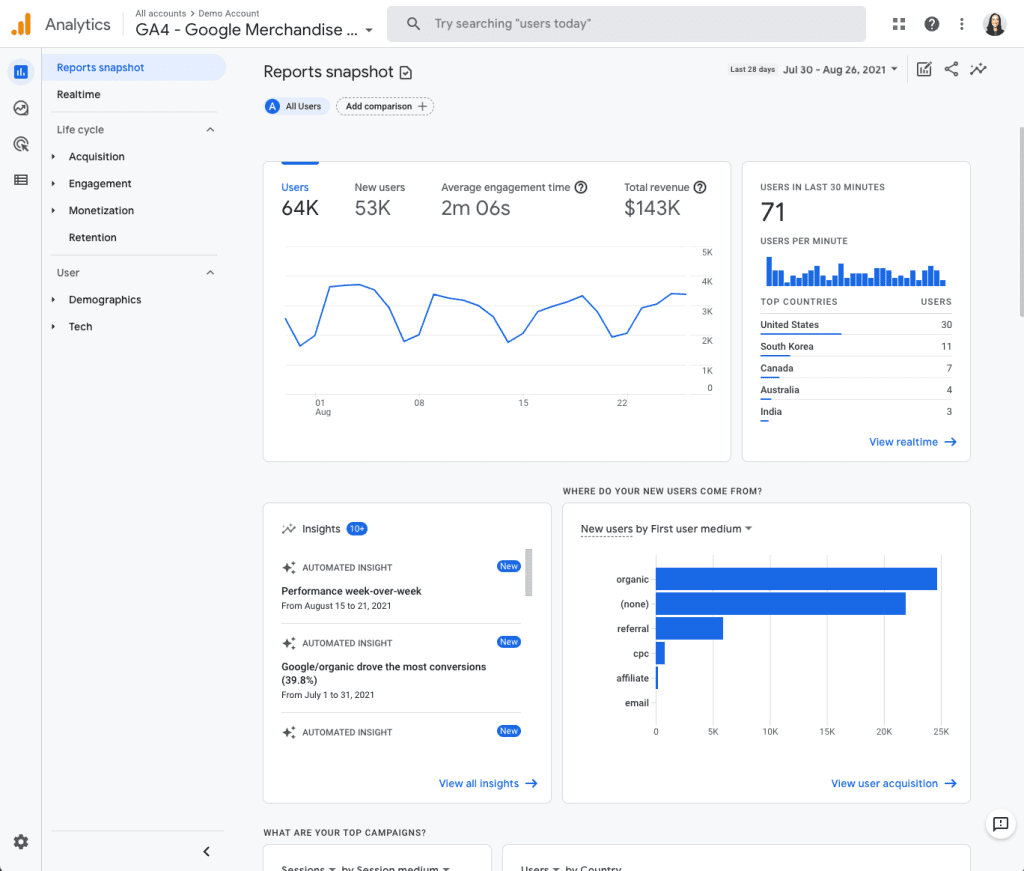
Integration with Marketing Channels: Seamless Connectivity
A robust Marketing Attribution Software seamlessly integrates with diverse marketing channels, consolidating data from sources like social media, email, paid advertising, and organic search.
HubSpot’s Marketing Hub, for instance, enables users to track interactions across multiple channels, facilitating a unified view of the customer journey.
Customization and Flexibility: Tailoring Insights to Your Needs
Flexibility in attribution models and reporting is a hallmark of effective Marketing Attribution Software. Tools like Adobe Analytics allow users to customize attribution models based on their unique business requirements.
This adaptability ensures that the software aligns with the specific goals and objectives of the marketing strategy.
Reporting and Analytics: Actionable Insights at Your Fingertips
Marketing Attribution Software provides robust reporting and analytics capabilities. Platforms like Wicked Reports offer detailed reports on attribution, allowing marketers to analyze performance, identify high-impact channels, and make informed decisions.
These insights empower teams to refine strategies for maximum effectiveness.
Cross-Device Tracking: Tracing the Omni-Channel Journey
With consumers accessing content across various devices, cross-device tracking is indispensable. Marketing Attribution Software, such as Convertro, excels in tracing the customer journey across devices.
This ensures that every touchpoint, whether on a desktop, tablet, or mobile device, contributes appropriately to the overall attribution model.
Understanding these fundamental aspects of Marketing Attribution Software sets the stage for harnessing its power in the dynamic realm of digital marketing.
The next section explores the tangible benefits that businesses can reap by incorporating this sophisticated tool into their marketing arsenal.
2. Benefits of Using Marketing Attribution Software
In the highly competitive world of digital marketing, adopting Marketing Attribution Software isn’t just an option; it’s a strategic imperative.
This section unveils the transformative benefits that businesses can unlock by leveraging this sophisticated tool, backed by real-world examples and substantiated by relevant data and statistics.

Improved ROI Measurement
Precision in Budget Allocation
Marketing Attribution Software brings a level of precision to budget allocation that traditional models often lack.
By attributing value to each touchpoint in the customer journey, businesses can allocate their marketing budget more effectively.
Example: Airbnb’s Success Story
Airbnb, a pioneer in the sharing economy, exemplifies the power of precise ROI measurement.
By employing Marketing Attribution Software, Airbnb gained insights into the most effective touchpoints in their marketing funnel.
This data-driven approach allowed them to allocate resources strategically, resulting in a significant boost in ROI.
Enhanced Decision-Making
Data-Driven Insights for Strategic Planning
Marketing Attribution Software empowers businesses with data-driven insights, enabling informed decision-making.
Example: Google Analytics 360 Impact on Decision-Making
Google Analytics 360, a comprehensive Marketing Attribution Software, has played a pivotal role in enhancing decision-making for businesses.
The platform provides a unified view of user interactions, enabling marketers to identify high-performing channels and optimize their strategies accordingly.
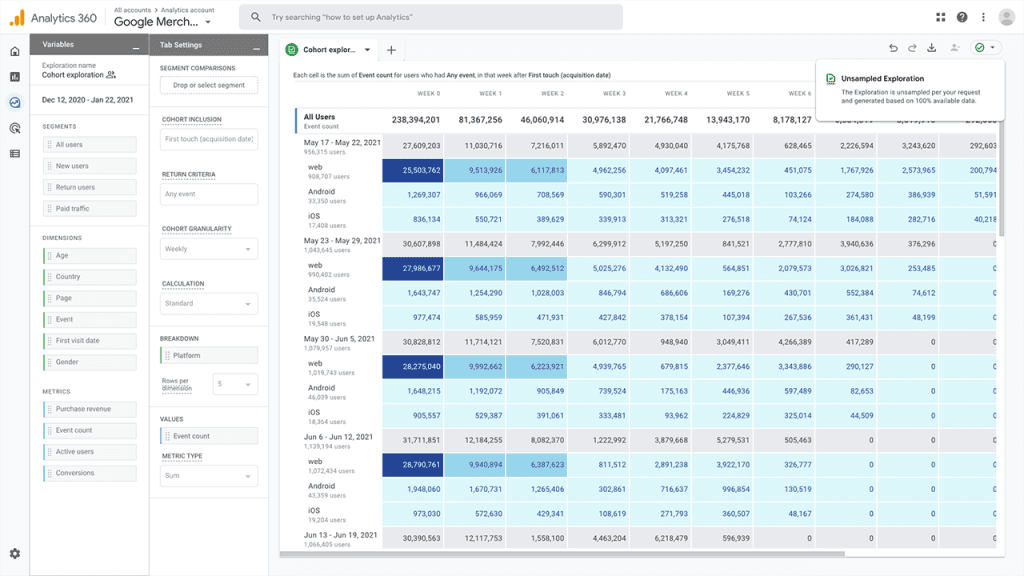
Optimized Marketing Budget Allocation
Maximizing the Impact of Each Dollar
With Marketing Attribution Software, businesses can optimize their marketing budget allocation based on the channels and touchpoints that contribute most to conversions.
Example: eBay’s Smart Budget Allocation
eBay’s success in optimizing marketing budget allocation is a testament to the power of Marketing Attribution Software.
By understanding the influence of various touchpoints, eBay strategically distributed its budget to channels that drove the most value, resulting in a significant increase in overall efficiency.
Better Understanding of Customer Journey
Mapping the Customer Journey for Personalized Engagement
Marketing Attribution Software provides a comprehensive view of the customer journey, from awareness to conversion.
This understanding allows businesses to tailor their messaging and engagement strategies at each stage.
Example: Amazon’s Customer-Centric Approach
Amazon’s customer-centric approach is fueled by a deep understanding of the customer journey.
As businesses navigate the complex landscape of digital marketing, the benefits of incorporating Marketing Attribution Software become increasingly evident.
From precise ROI measurement to strategic decision-making, the impact is not only tangible but also essential for staying ahead in today’s competitive market.
The next section will guide you through the crucial process of selecting the right Marketing Attribution Software for your business needs.
3. How to Choose the Right Marketing Attribution Software
Selecting the right Marketing Attribution Software is a pivotal decision that can significantly impact the effectiveness of your digital marketing strategy.
This section provides a detailed roadmap, outlining key considerations and factors to ensure that the chosen software aligns seamlessly with your business needs.

Assessing Your Business Needs
- Size and Type of Business: One Size Does Not Fit All
- Consideration: The size and type of your business play a crucial role in determining the complexity of your marketing needs.
Small businesses might find value in simpler attribution models, while larger enterprises with multifaceted marketing channels may require more advanced features. - Example: A local boutique may benefit from a straightforward first-touch attribution model, focusing on the initial customer touchpoint.
On the other hand, a multinational e-commerce giant may need a sophisticated multi-touch attribution approach to capture the intricacies of its extensive marketing ecosystem.
- Consideration: The size and type of your business play a crucial role in determining the complexity of your marketing needs.
- Marketing Channels Utilized: Tailoring Attribution to Your Channels
- Consideration: Different businesses leverage diverse marketing channels – from social media and email to paid advertising and content marketing.
Your Marketing Attribution Software should seamlessly integrate with and accurately attribute conversions across all relevant channels. - Example: If your business heavily relies on social media marketing, choosing a tool like Hootsuite Impact or Wicked Reports, which specializes in tracking social media attribution, can provide more targeted insights.
- Consideration: Different businesses leverage diverse marketing channels – from social media and email to paid advertising and content marketing.
- Budget Constraints: Finding the Right Balance
- Consideration: Budget considerations are paramount. Evaluate the cost-effectiveness of the software about your budget constraints. Some tools may have a subscription-based model, while others may charge based on usage or the number of touchpoints tracked.
- Example: For smaller businesses with limited budgets, free or affordable options like Google Analytics can offer foundational attribution insights. However, larger enterprises might opt for more robust, premium solutions like Adobe Analytics for comprehensive features.
Compatibility and Integration
- Compatibility with Existing Systems: Seamless Integration Matters
- Consideration: The chosen Marketing Attribution Software should seamlessly integrate with your existing systems, such as CRM platforms, marketing automation tools, and customer databases. Compatibility ensures a holistic view of data.
- Example: Salesforce Marketing Cloud, with its extensive integration capabilities, allows businesses to unify customer data, providing a cohesive view of the customer journey and facilitating effective attribution.
- Integration with Popular Marketing Platforms: Streamlining Operations
- Consideration: Consider software that integrates with popular marketing platforms like Google Ads, Facebook Ads, and other major channels. This streamlines data collection and ensures that no touchpoint goes unnoticed.
- Example: HubSpot Marketing Hub offers seamless integration with a variety of marketing platforms, consolidating data from different channels and providing a unified attribution view.
Ease of Use and Implementation
- User-Friendly Interface: Accessibility for All Teams
- Consideration: A user-friendly interface is crucial for widespread adoption across different teams within your organization. The software should offer a clear and intuitive dashboard for easy navigation.
- Example: Tools like Adobe Marketo Measure, known for their user-friendly interface, allow marketers to access attribution insights without the need for extensive training, fostering widespread adoption.
- Training and Support: Empowering Users
- Consideration: Evaluate the availability of training resources and support. The chosen software should provide ample documentation, tutorials, and customer support to empower users and address any potential issues.
- Example: Marketo, integrated with Adobe Marketo Measure, offers extensive training resources, ensuring that users can harness the full potential of the combined platforms for robust attribution.
- Implementation Process: Minimizing Disruption
- Consideration: Assess the complexity and time required for the implementation process. The software should integrate smoothly with minimal disruption to existing workflows.
- Example: Optimizely, a popular experimentation platform, boasts a streamlined implementation process, allowing businesses to quickly incorporate it into their marketing stack for effective attribution.
Customization Options
- Ability to Customize Attribution Models: Tailoring to Your Strategy
- Consideration: The flexibility to customize attribution models is crucial. Your chosen software should allow you to adapt attribution models based on the unique needs and objectives of your marketing strategy.
- Example: Convertro, known for its advanced customization options, empowers businesses to create tailor-made attribution models that align precisely with their marketing goals.
- Flexibility in Reporting: Adapting to Evolving Strategies
- Consideration: Look for software that offers flexibility in reporting. As your marketing strategy evolves, the software should adapt, providing insights into new channels or touchpoints.
- Example: AppsFlyer, a mobile attribution platform, offers dynamic reporting features, allowing businesses to adjust and refine their reporting parameters as needed.
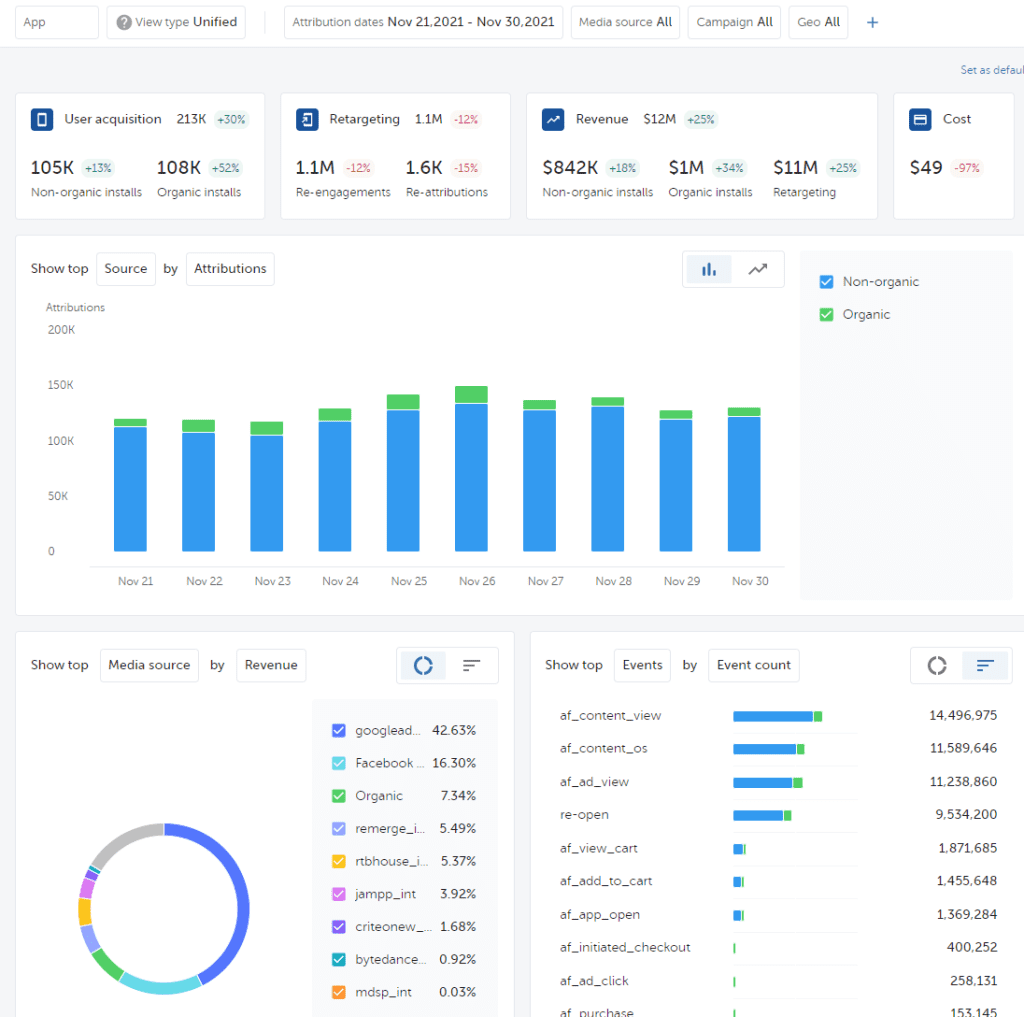
Pricing Models
- Subscription-based vs. Usage-based Pricing: Finding Cost-Effective Solutions
- Consideration: Evaluate the pricing models offered by different software options. Some may operate on a subscription basis, while others may charge based on usage. Consider which model aligns best with your budget and usage patterns.
- Example: Ahrefs, a comprehensive SEO tool, operates on a subscription-based model, offering various plans to cater to the diverse needs and budgets of businesses.
- Hidden Costs and Additional Fees: Clarity in Pricing Structures
- Consideration: Scrutinize the pricing structures to uncover any hidden costs or additional fees. Transparent pricing ensures that there are no surprises in the long run.
- Example: Semrush, a popular SEO and marketing tool, is known for its transparent pricing structure, providing clarity on costs and ensuring businesses can budget effectively.
4. Top Marketing Attribution Software Options
Choosing the right Marketing Attribution Software is a critical decision for businesses aiming to enhance their digital marketing strategies.
This section explores some of the top software options available in the market, offering insights into their features, capabilities, and how they cater to diverse business needs.
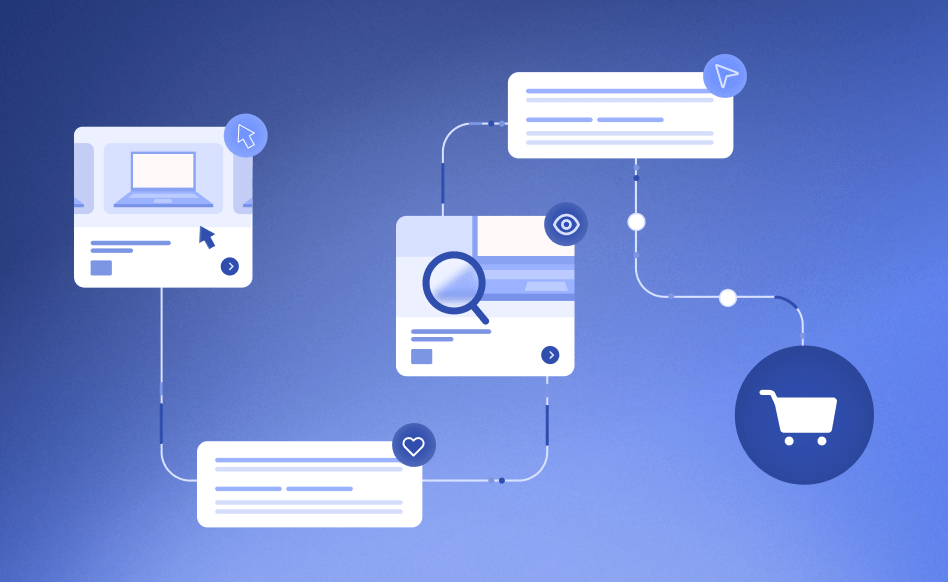
Overview of Leading Software in the Market
- Google Analytics 360: A Comprehensive Analytics Solution
- Description: Google Analytics 360, the premium version of Google Analytics, offers a comprehensive suite of analytics tools, including advanced attribution modelling.
It enables businesses to track user interactions across various touchpoints and provides valuable insights into the customer journey.
- Description: Google Analytics 360, the premium version of Google Analytics, offers a comprehensive suite of analytics tools, including advanced attribution modelling.
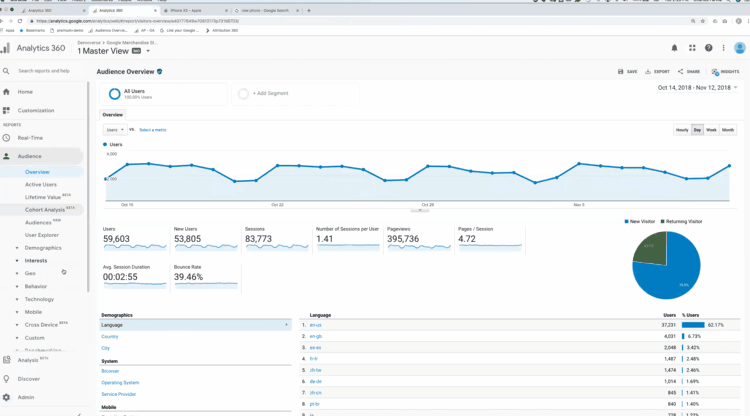
- Features:
- Multi-channel funnel reporting for in-depth attribution insights.
- Integration with Google Ads and other Google marketing platforms.
- User-friendly interface with customizable dashboards.
- Benefits:
- Widely used and trusted analytics solution.
- Seamless integration with other Google services.
- Robust reporting capabilities for data-driven decision-making.
- Adobe Marketo Measure: A Revenue Attribution Powerhouse
- Description: Acquired by Marketo, Adobe Marketo Measure focuses on revenue attribution, helping businesses understand how marketing efforts contribute to revenue generation.
It provides a holistic view of the customer journey and allows marketers to attribute revenue to specific touchpoints.
- Description: Acquired by Marketo, Adobe Marketo Measure focuses on revenue attribution, helping businesses understand how marketing efforts contribute to revenue generation.
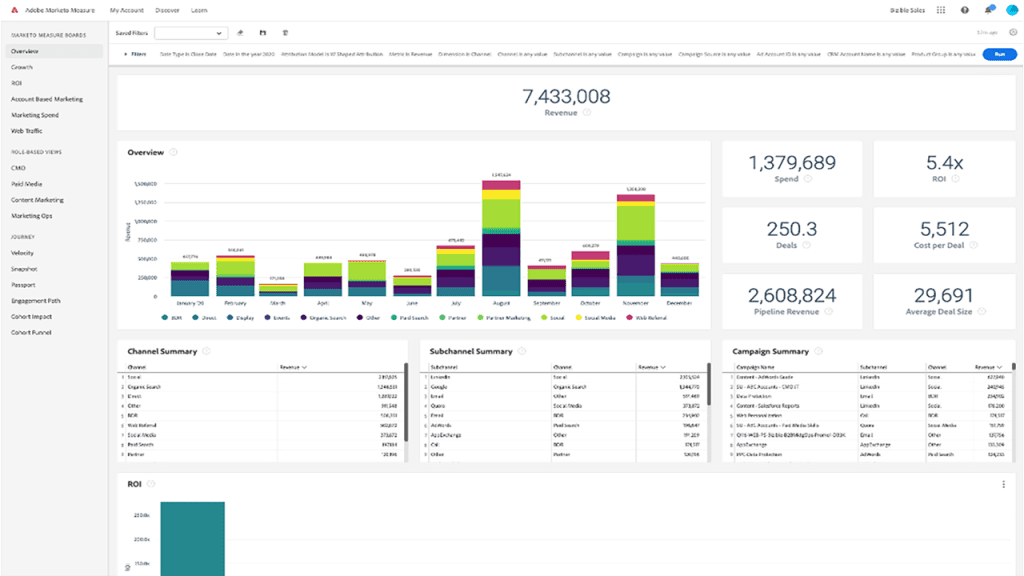
- Features:
- Full-funnel attribution modeling.
- Integration with various marketing automation platforms.
- Customizable attribution models based on business needs.
- Benefits:
- Precise revenue attribution for informed decision-making.
- Seamless integration with Marketo and other marketing tools.
- Flexible attribution models to adapt to different strategies.
Feature Comparison
- HubSpot Marketing Hub: All-in-One Marketing Attribution
- Description: HubSpot Marketing Hub offers a suite of marketing tools, including robust attribution features. It provides a unified view of customer interactions across channels, helping businesses understand the impact of their marketing efforts.
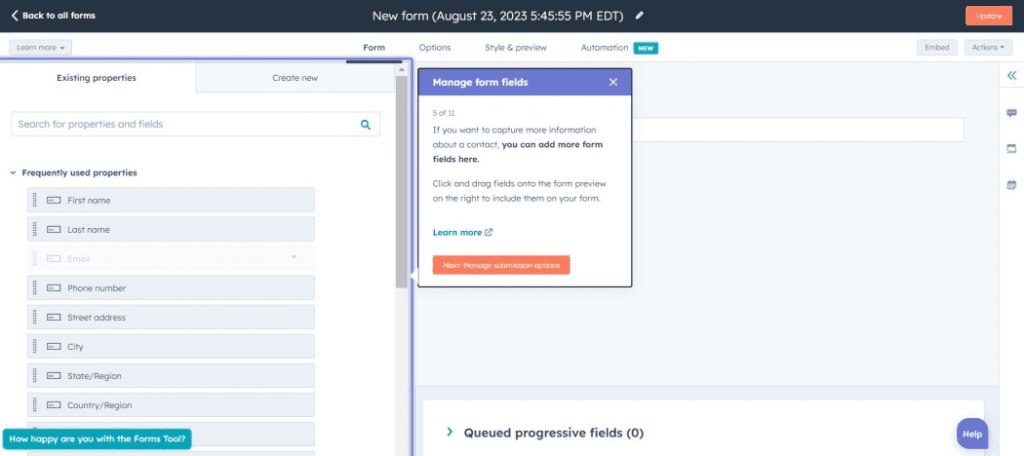
- Features:
- Multi-touch attribution modeling.
- Integration with various marketing channels.
- Customizable reports and dashboards.
- Benefits:
- Centralized platform for comprehensive marketing management.
- The user-friendly interface is suitable for various team members.
- Integration with HubSpot CRM for enhanced customer insights.
- Wicked Reports: Advanced Attribution for E-commerce
- Description: Wicked Reports specializes in advanced attribution solutions for e-commerce businesses. It focuses on tracking and attributing revenue from various marketing channels, providing actionable insights for optimization.
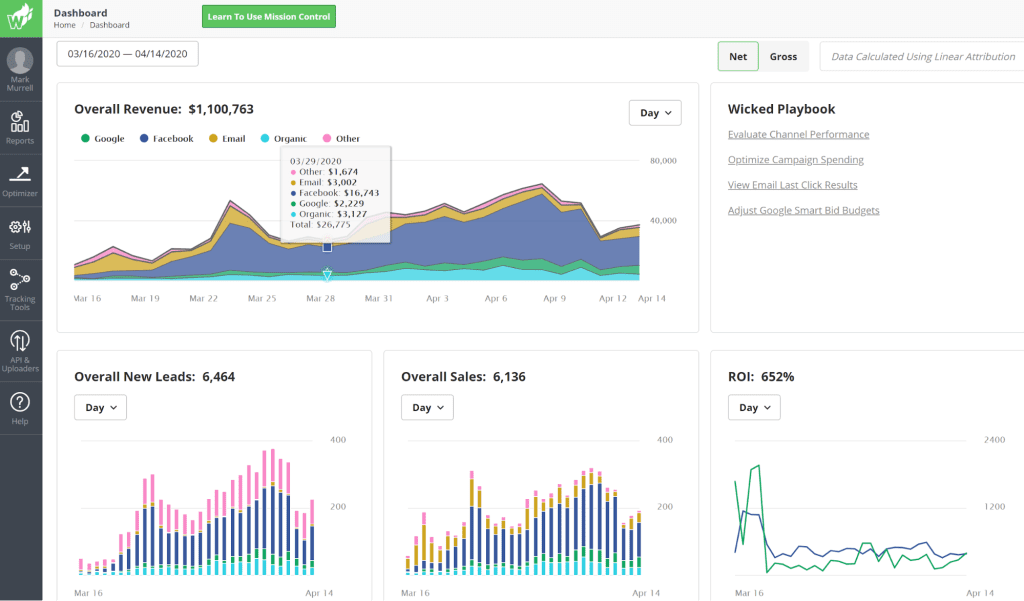
- Features:
- Multi-channel attribution tracking.
- ROI analysis for different marketing campaigns.
- Integration with popular e-commerce platforms.
- Benefits:
- Specific focus on e-commerce revenue attribution.
- Accurate tracking of customer touchpoints.
- Customizable reporting for in-depth analysis.
User Reviews and Ratings
- Adobe Analytics: Enterprise-Grade Attribution Solution
- Description: Adobe Analytics is an enterprise-level solution offering advanced analytics and attribution capabilities. It caters to large organizations with complex marketing ecosystems, providing detailed insights into user interactions.
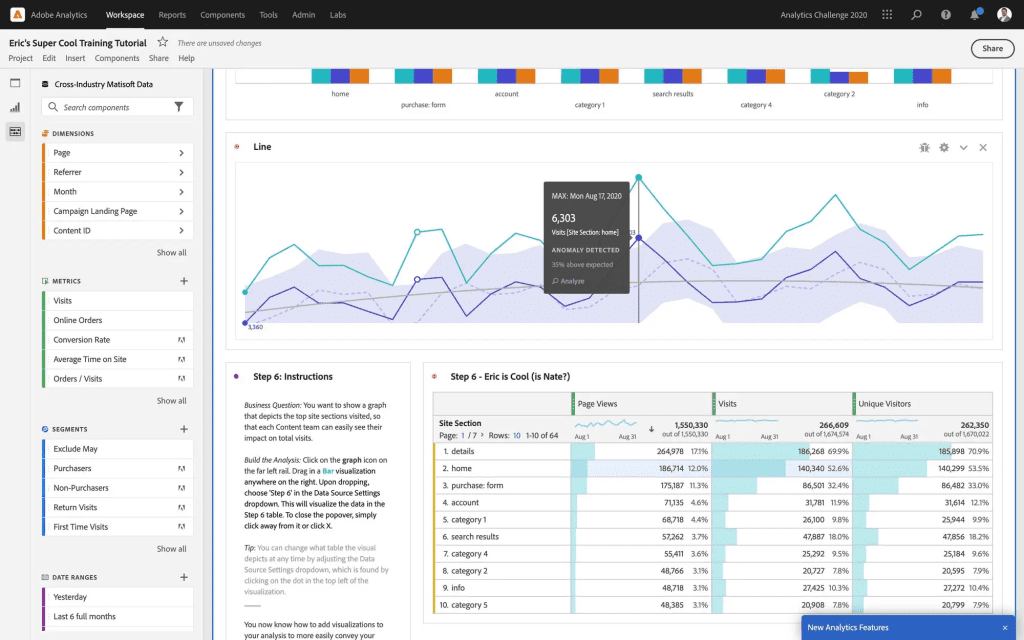
- Features:
- Customizable attribution models.
- Integration with Adobe Marketing Cloud.
- Real-time analytics for quick decision-making.
- Benefits:
- Tailored for enterprise-scale businesses.
- Comprehensive analytics for in-depth insights.
- Integration with other Adobe Marketing Cloud solutions.
- Convertro: Customizable Attribution for Diverse Needs
- Description: Convertro is known for its customizable attribution models, allowing businesses to tailor their approach based on unique requirements. It caters to diverse industries, providing flexibility in attribution tracking.
- Features:
- Customizable attribution models.
- Cross-device tracking for comprehensive insights.
- Integration with various marketing channels.
- Benefits:
- Adaptable to the specific needs of different industries.
- Granular insights into the customer journey.
- Flexible reporting options for diverse marketing strategies.
Conclusion
Embarking on the journey to understand Marketing Attribution Software has been a deep dive into the intricate web of digital marketing analytics.
From demystifying attribution models to exploring the transformative benefits, this guide has illuminated the significance of adopting Marketing Attribution Software in the dynamic landscape of online business.
As we reflect on the wealth of information shared, it’s clear that this technology is not merely a tool but a compass, guiding businesses through the complexities of the customer journey with precision and insight.
Choosing the Right Path: Key Considerations for Selection
The path to choosing the right Marketing Attribution Software is paved with careful considerations, and the journey begins with a meticulous assessment of your business needs.
Size, marketing channels, and budget constraints form the foundation of this assessment, providing a blueprint for the selection process. Compatibility and integration become the next crucial steps, ensuring seamless data flow and harmonious operations.
The emphasis on user-friendliness, training, and implementation further solidifies the foundation, empowering teams to make the most of the chosen software.
Customization options and transparent pricing models then become the guiding lights, ensuring the tool aligns precisely with your unique strategies and remains within budgetary constraints.
Navigating the Landscape: Top Marketing Attribution Software Options
Armed with a strategic roadmap, the journey through the diverse landscape of Marketing Attribution Software options becomes both exciting and essential.
Google Analytics 360 emerges as a comprehensive analytics solution, offering advanced attribution modeling and seamless integration with Google’s marketing platforms.
Adobe Marketo Measure, focusing on revenue attribution, stands out as a powerhouse for businesses seeking to understand the direct impact of marketing efforts on revenue generation.
The feature-rich HubSpot Marketing Hub and advanced Wicked Reports cater to different needs, providing multi-touch attribution and detailed insights for e-commerce businesses, respectively.
Adobe Analytics and Convertro, with their customizable attribution models, cater to the diverse needs of large enterprises, offering granular insights into the customer journey.
Beyond the Horizon: Additional Resources for Continued Growth
As we conclude this exploration, the journey continues with a glance beyond the horizon. Additional resources, ranging from documentation and courses to industry reports and studies, await those eager to deepen their understanding of Marketing Attribution Software.
Whether delving into the intricacies of Google Analytics 360 or exploring the extensive resources offered by Adobe Marketo Measure, HubSpot, and others, the quest for knowledge and mastery is boundless.
The links provided serve as portals to ongoing education, ensuring businesses remain at the forefront of industry trends and innovations.
A Call to Action: Empowering Your Marketing Odyssey
In closing, this comprehensive guide is not just a collection of insights; it’s a call to action.
Armed with the knowledge of attribution models, the critical considerations in selecting the right tool, and the real-world examples of success, businesses are empowered to embark on their own marketing odyssey.
The choice of Marketing Attribution Software is not merely a decision; it’s a strategic investment in the precision, insight, and success of your digital marketing endeavors.
As you navigate the landscape with newfound clarity, may your journey be transformative, your insights profound, and your destination one of sustained success in the ever-evolving world of digital marketing. Safe travels.
If you are looking for a top-class digital marketer, then book a free consultation slot here.
If you find this article useful, why not share it with your friends and business partners, and also leave a nice comment below?
We, at the AppLabx Research Team, strive to bring the latest and most meaningful data, guides, and statistics to your doorstep.
To get access to top-quality guides, click over to the AppLabx Blog.
People also ask
How do you choose a marketing attribution model?
Choosing a marketing attribution model involves understanding your business goals, customer journey complexity, and the nature of your marketing channels. Consider factors like first-touch for awareness, last-touch for conversion, or multi-touch for a comprehensive view. Tailor the model to align with your unique strategy and objectives. Regularly analyze and adjust for evolving marketing landscapes.
What is marketing attribution software?
Marketing attribution software is a tool that tracks and analyzes customer touchpoints across various channels to attribute value to each interaction in the customer journey. It provides insights into the effectiveness of marketing efforts, aiding businesses in optimizing strategies and allocating budgets based on data-driven analysis.
What is one way to measure marketing attribution?
One effective way to measure marketing attribution is through multi-touch attribution models. These models assign value to multiple touchpoints in the customer journey, offering a holistic view of how different marketing channels contribute to conversions. It provides a more accurate representation of the customer’s path to conversion compared to single-touch models.




































